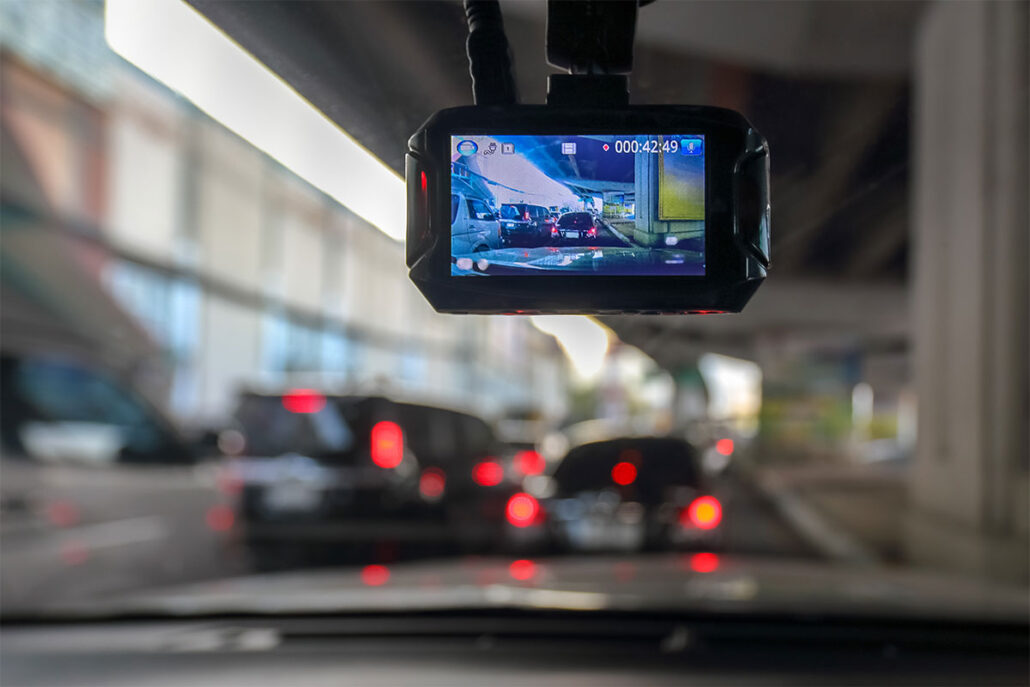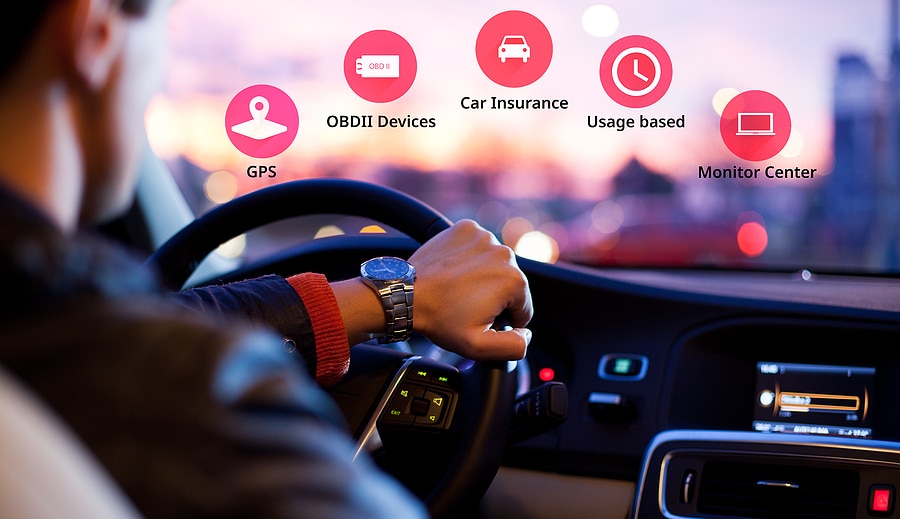If you buy through affiliate links, we may earn commissions, which help support our product reviews.
Last Updated: Mar 13, 2023
The National Highway Traffic Safety Administration reports that the number of fatalities due to car crashes has continued to rise over the years. Concerned by the alarming statistics, insurance companies have initiated efforts to help reduce the occurrence of road accidents.
Even the best car insurance companies are now using multiple variables to determine auto insurance rates. This is where insurance telematics comes in.
What is Telematics?
Telematics insurance is a type of car insurance that uses technology to track and monitor the driving habits of policyholders. The goal of telematics insurance is to provide a more personalized and accurate assessment of a driver’s risk level, resulting in more fair and affordable insurance premiums
A typical telematics system consists of a GPS, motion sensor, SIM card, and computer software. The system collects driving data and sends it to a cellular network server. The server then processes the data and uses it to achieve a specific goal.
Today, telematics is used mainly in the management of fleet or commercial vehicles. More applications are expected to come up as 5G becomes more popular. Telematics has excellent potential in various industries. These industries include transportation, healthcare, safety, and auto insurance.
Telematics Car Insurance is Usage-Based Car Insurance
Telematics car insurance is also called usage-based car insurance since the telematics data generated is a way to see how you “use” the car, thus, Usage-based insurance.
Traditional car insurance would rely on your disclosure of yearly miles driven and your driving history as the only way to set your insurance premium.
Telematics allows for a pay per mile insurance by tracking mileage and can help reduce insurance fraud.
Telematics’ Role in Insurance
Insurance companies collect driver and vehicle information. Telematics helps them gather information about drivers and how they use their vehicles.
The use of telematics in insurance is known as black box insurance. In the same way that a black box in airplanes can monitor how pilots fly, telematics systems can also track how drivers handle their cars.
Telematics allows insurance companies to provide a personalized premium based on a driver’s current driving behavior, and driving habits and not on his driving record. Using telematics insurance, it is possible to come up with innovative schemes such as pay-per-use policies.
How Telematics Affects your Insurance Rates
Telematics has helped insurance companies overcome some of the challenges in the industry. The system allows companies to identify safe drivers and reward them accordingly with lower premiums.
It was previously difficult for insurance companies to have an accurate risk profile of a driver. With its ability to gather real-time data, telematics enables insurers to make on-point risk assessments and provide appropriate policies. The system can also help in making roads safer by encouraging safe driving habits.
When you apply for car insurance, you can expect the insurance company to ask you several questions. The company will then provide you with a quote based on your answers. One of the bases for the quote is the number of miles you drive in a year.
For example, a car owner who has driven for 20,000 miles in a year will have to pay more than someone who has driven for only 10,000 miles in a year. The insurance company can track the number of miles you have driven using a telematics device or tracking device (black box).
This can also help you if you use video evidence and a gps tracker for extra protection and possibly lower insurance rates. Considering video evidence, front and rear dash cams can be invaluable tools for drivers.

How Does it Work?
A telematics device is installed in a car. This can be a small dongle that sticks to the windshield and uses a phone app to transmit the telematics data.
Some of the data points that telematics insurance may track include:
- Distance traveled: This can help the insurance company assess the likelihood of the policyholder being involved in a collision. Drivers who travel long distances or who frequently drive at night may be at a higher risk of being involved in an accident.
- Speed: Drivers who consistently speed or who drive aggressively may be more likely to be involved in a collision.
- Hard braking: This can indicate that a driver is not paying attention to the road or is not driving in a safe manner.
- Time of day: Some insurance companies may consider the time of day that a policyholder is driving, as certain times of the day may be more dangerous than others. For example, late at night or during rush hour may be considered more risky times to drive.
The insurance company uses the data to assess risk based on your driving behavior. If you’re determined to be a safe driver, you could get a lower premium. Insurance companies can also use data from telematics to track a vehicle in case it gets stolen.
Benefits to Car Owners
Suppose the telematics system can establish that you have been a good driver. In that case, your insurance company may lower your premium. Insurance companies now use data gathered by telematics devices to determine a driver’s premium instead of their credit score.
Also, using location data, insurance companies can verify low mileage drivers and adjust the auto insurance policy premium accordingly.
Roadside Assistance
Since the telematics device monitors the cars location, it can provide instant location in the event roadside assistance or emergency response is needed.
On board Diagnostics
Some telematics plug-in devices can monitor your vehicle’s engine performance data and can notify if there is a problem or maintenance is needed.
Insurance companies provide other ways of rewarding safe drivers. Some companies offer a refund at the end of the year. Other insurance providers increase the mileage allowance for the following year.
An insurance company might charge you more than the standard rate if you work a night shift, make long commutes, or often exceed the speed limit because you are deemed high risk. You have a chance to be eligible for a refund or discount if you stay within the speed limit or don’t accelerate or brake abruptly based on your safe driving habits.
The feedback you get from reports generated by a telematics system can help improve your driving habits and reduce the chances of accidents happening. Telematics can also help track stolen cars.
Telematics devices can lock a vehicle’s ignition, reducing the chances of it being stolen. The system also makes it easy to file a claim since it provides real-time and accurate information to the insurance company.
Track your Vehicle and Mileage App
The Trakkit App can also track your GPS location and mileage similar to the insurance company apps.
See more about tracking your car with a cell phone.
The Bottom Line
Both insurance companies and drivers should welcome the growing popularity of telematics. The system offers benefits, not only to insurance companies but to their customers too. The most significant advantage of telematics to drivers is lowering their insurance premiums.
